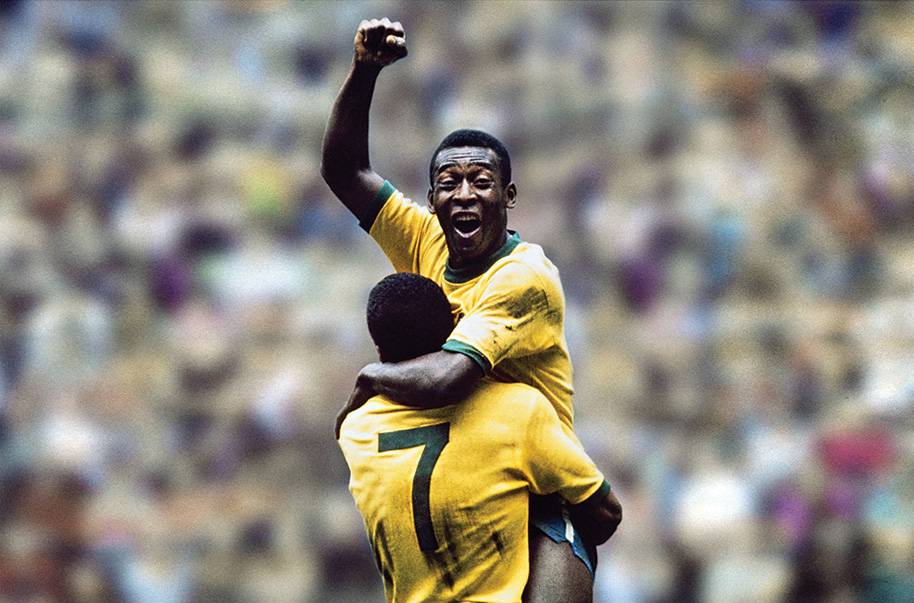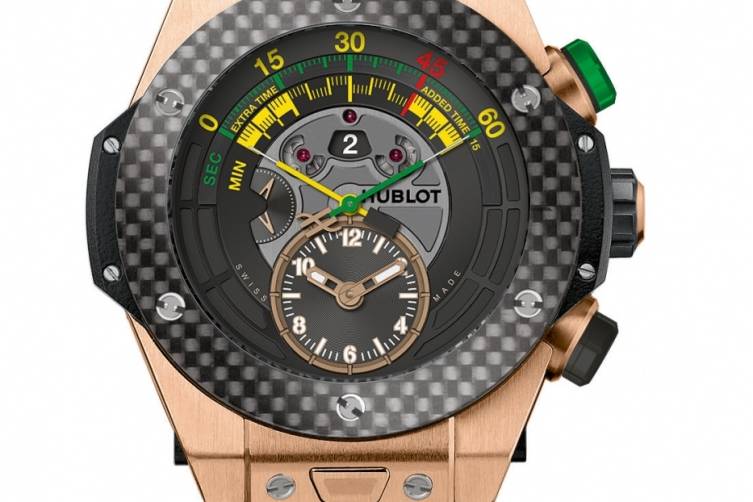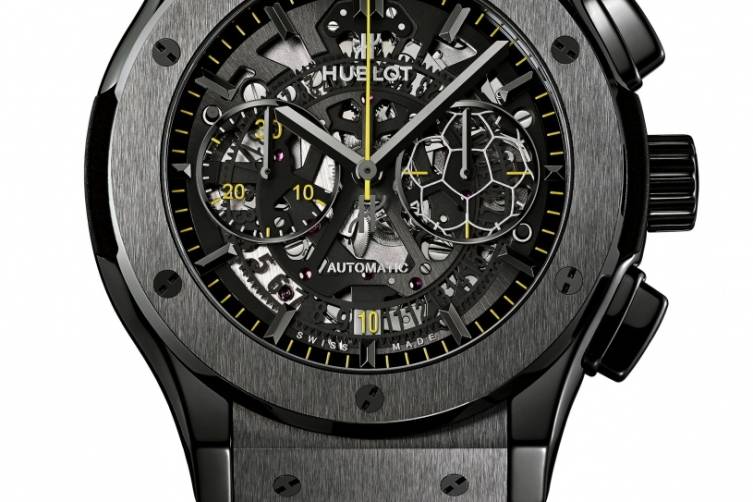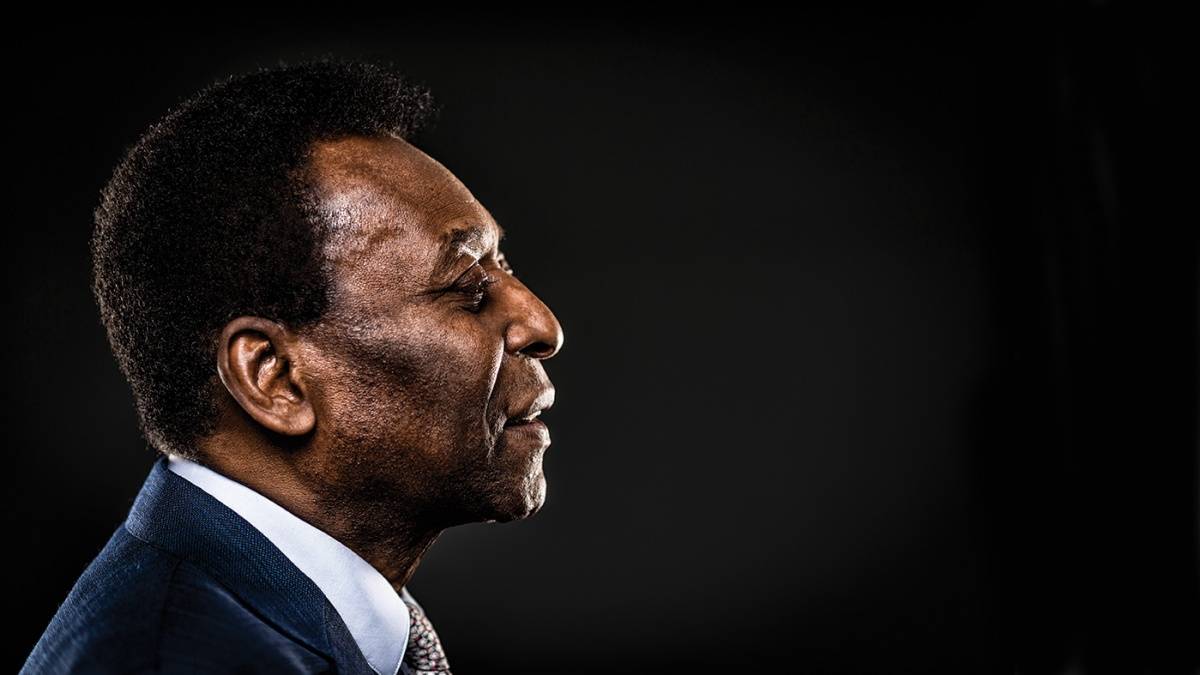
It’s hard to fathom just how big Pelé was at the peak of his career, but if you can imagine Tiger Woods, LeBron James, Michael Phelps and the Williams sisters all rolled into one superlative superstar, you start to get the idea. The fervor Pelé drew at the peak of his career as the world’s greatest soccer star continues today, where he can draw crowds in a matter of minutes when he steps out without a hat to hide his iconic almond-shaped hairstyle that has not changed since his professional debut almost 55 years ago. His explanation of his longevity has something to do with the three-decade span of his career and keeping on the straight and narrow. “I started to play young. I played in my first World Cup when I was 17, so I have almost three generations of followers. That could be the reason,” he says of his long reign. “I try not to make mistakes, I try not to disappoint them, and I think maybe that is the reason people still follow me now.” Whatever the reason, few athletes draw the same level of passion as the soccer star, who was designated a national treasure in Brazil after a million-dollar offer to play in Italy. That designation prevented his “export” (it’s against the law in Brazil to export national treasures,) and insured that he stayed in the country. So he spent his entire career playing for Brazil’s Santos team, which became the best in Brazil with many exposition games.
Pelé not only stayed in Brazil but also led its national team to FIFA World Cup victory a record-breaking three times: in 1958, 1962 and 1970. “Almost all of the Brazilian players on the [current] national team have played in Europe,” notes Pelé who – though he played all over the world for Santos and World Cup matches – says his biggest regret is not making it to Wembley Stadium in London which he calls “the cathedral of football.” Despite his one-team status, by the 1970s, he was the world’s highest paid athlete and a beloved brand around the world, in some countries second only to Coca-Cola. People were so excited to see Pelé that warring factions in Nigeria put down their weapons for two days just to watch him play.
It wasn’t until he finished his football career in Brazil that he left the country to play in the US on the New York Cosmos from 1975 to 1977. The move got him out of retirement and gave the star two more years playing the sport he loved. It also served as a diplomatic mission, increasing soccer’s popularity across the country. “My best decision was to go to the United States and play with the New York Cosmos. There, football was [just] beginning and I could promote it,” he says. “That was the best time because I stayed in the game with passion.”
Although soccer, or “futebol,” has never quite joined the realm of basketball, baseball and American football, in terms of popularity in the states, Pelé can definitely take credit for the popularity it does have here, especially the prevalence of youth soccer. “[I think] the base is much more organized here than in Brazil, maybe even than in the whole of South America,” explains Pelé. “In the US, from ages eight to 20 a lot of kids play soccer – I helped [with that]. Then I helped the girls and the girls here have become the best in the world.” This is the gospel of Pele who believes soccer drastically changed his life for the better. “The biggest family in the world is soccer,” he says.
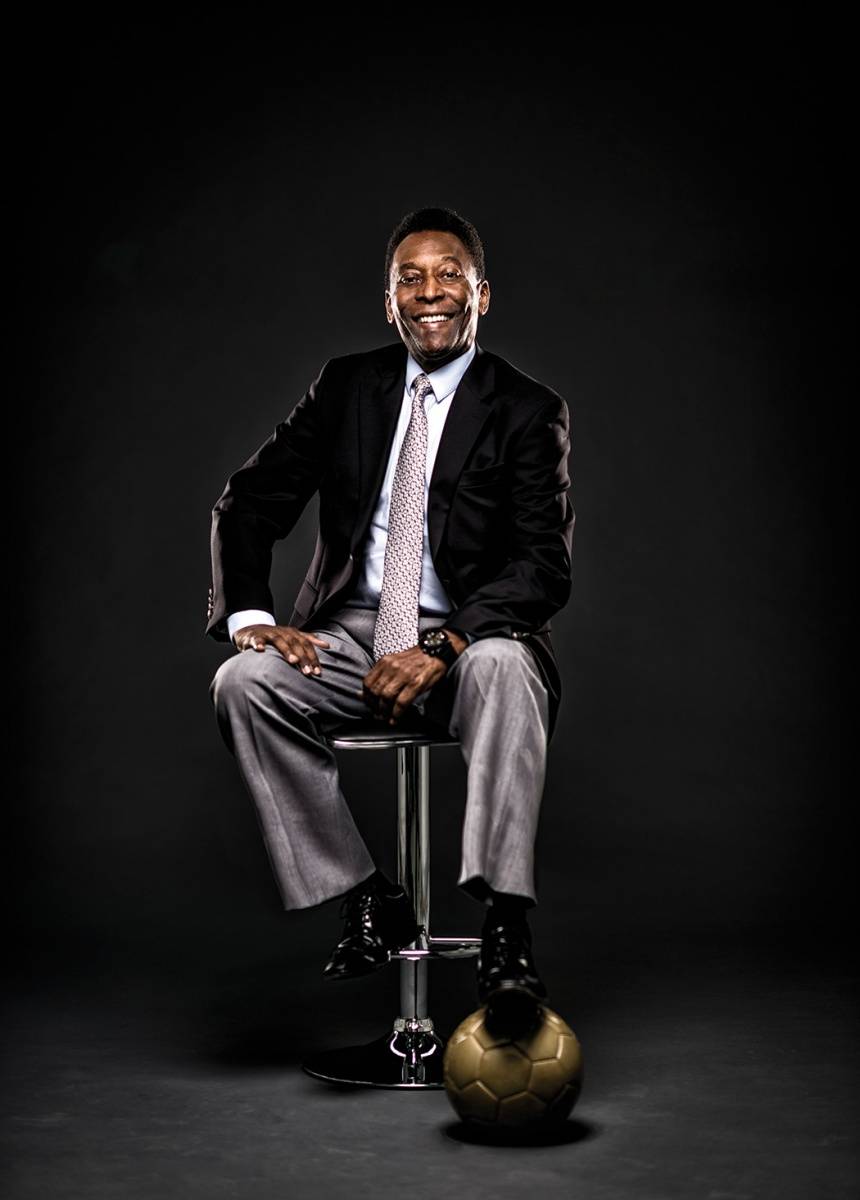
David Beckham’s stateside adventures mirrors Pelé’s, as Becks finished his career playing for the LA Galaxy and is now in the throes of trying to bring Major League Soccer to Miami, also in an effort to promote the sport. Pelé pauses, his big eyes looking earnest and reflects as one soccer legend on another. “To have a name like Beckham here is very, very important and very good for the sport.”
Today in America’s segmented society, it’s hard to imagine an entire country unified in its love for a single sport. But in Brazil, soccer, or “fútbol,” is a passion that runs deeper than the Pacific Ocean. In fact, Pelé famously recounts seeing his father crying at the age of 50 when Brazil lost the World Cup. Pelé was 10 at the time and vowed to win a World Cup for his father. And in 1958, at age 17, he brought Brazil its first World Cup victory, which effectively put the country on the map.
The televised game did something else too – it gave the world a look at a young Pelé, then an unknown soccer star who played a gutsy game and “ran circles around seasoned veterans.” As many goals as Pelé has made (1281 in a total of 1363 career games,) he has utmost respect for goalkeepers. “I can miss and try again, but the goal keeper cannot miss,” he says. But even at the age of 73, he doesn’t miss often. There is a soon-to-be-released biopic about him coming out, a Pelé museum opening soon in Santos, and endorsement offers pouring in. “A lot of [the] requests have to do with alcohol or tobacco, but I never do that because it’s not a good message,” Pelé says plainly. However, when Hublot CEO Ricardo Guadalupe came to him with the idea for a Pelé edition Hublot timepiece, he said yes, effectively picking the brand as much as it picked him. He also sees the connection clearly, “I always scored at the right time, so it was a perfect combination, the ball with the watch,” says Pelé.
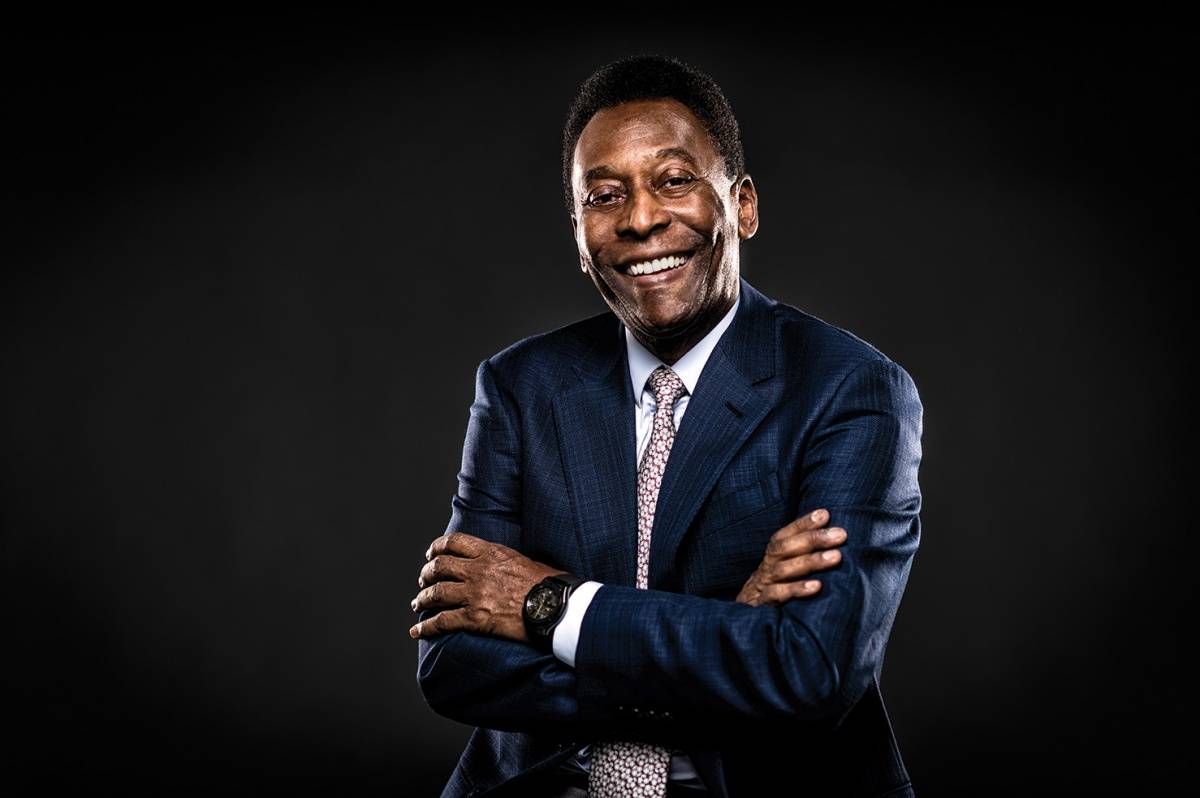
To create his namesake timepiece, Pelé flew to Nyon, Switzerland where Hublot timepieces are made, to collaborate in the making of the “Classic Fusion Chronograph Pele.” The watch, coming out this year, is a limited edition of 500 pieces. The color scheme of black-on-black with bright yellow accents evokes Brazil in the dial, second hand and contrast stitches on the strap, which features the distinctive hexagon-pentagon design on soccer-balls. A yellow gold version, in a limited series of 200 was also created with the soccer legend. The watch is Pelé through and through: understated, powerful and precise. Now for the 2014 FIFA World Cup Brazil, as the event’s Offical Timekeeper, Hublot is creating another special edition piece, in ceramic or King Gold version, that will be availablein limited runs of 200 and 100 respectively. Hublot’s CEO Ricardo Guadalupe said of the collaboration, “We wanted to do something different for the sport of football.” And different they did. They have created the first chronograph, using the UNICO in-house movement, to feature a biretrograde function to time soccer!
“It’s a chronograph dedicated to the sport, with a new display of the chronograph, which is a two second (retrograph seconds) that allows to calculate the minutes and seconds in the match. You can monitor both halves and even set it for overtime,” says Guadalupe. Of the 200 of the World Cup Watches made, 100 are in ceramic and 100 in gold and all of them come in a unique, hand-painted box by Romero Britto, the famous Miami artist who also hails from Brazil. The collaboration is part of Hublot’s Art of Fusion, which melds the art of watchmaking with current popular artists.
As the FIFA World Cup kicks off on June 12, the pressure is on for the Brazilian team to win and it’s not just because the sport’s greatest player will be in the stands watching. “I was joking with Hublot’s president saying ‘if Brazil wins, every player should get a Hublot watch.’ And he said ‘Okay!’” So now the Brazilian national team has one more reason to bring it home. It seems nobody has done more to help the Brazilian team win than Pelé, and now he’ll have to watch from the sidelines. “I’m much more relaxed [now that I’m not playing]. When you’re outside the field, it’s much better, but of course I still feel tense because I want Brazil to be the champion.”
Although he has come to terms with the fact that he will never be in a competitive game again, he has said he still keeps wishing he could play soccer. In his “retirement” he has stayed busy as the Brazilian Minister of Soccer and an UNESCO Goodwill Ambassador, even introducing anti-corruption legislation called the “Pelé Law” in Brazil. In 1997, he was knighted by Queen Elizabeth II at Buckingham Palace. Despite all these accolades, he says he likes to keep a low profile and relax at his farm in rural Brazil, writing music, playing guitar, and writing books including Pelé 10: What Makes A Great Play From The Master, Pele: The Autobiography, The World Cup Murder, The FIFA 100 and his latest, Why Soccer Matters. You can add humanitarian and inspirational speaker to the hats he has worn too, using soccer as a metaphor for living a better life. “To play is a gift from God. But you must be careful to never you think you are the best. Always you must prepare yourself training, and never to think you are the best.” That is the message Pelé likes to pass on to the kids, saying the most important thing is to be a good person. “ With luck, you can play soccer until 35 or 40 years , but after that, you are left with yourself.”
Credits:
Photography Nick Garcia
Styling by Elysze Held, Jacket by Billionaire
Grooming by Christina for SOBE Makeup Studio







